Some of the most interesting birds to be seen at this time of year are waterfowl. However, the only satisfying bird pictures I have taken of late are of passerines—birds with feet adapted for perching, such as songbirds.
The Song Sparrow is with us year round. This one is consuming a desiccated berry of the red osier dogwood.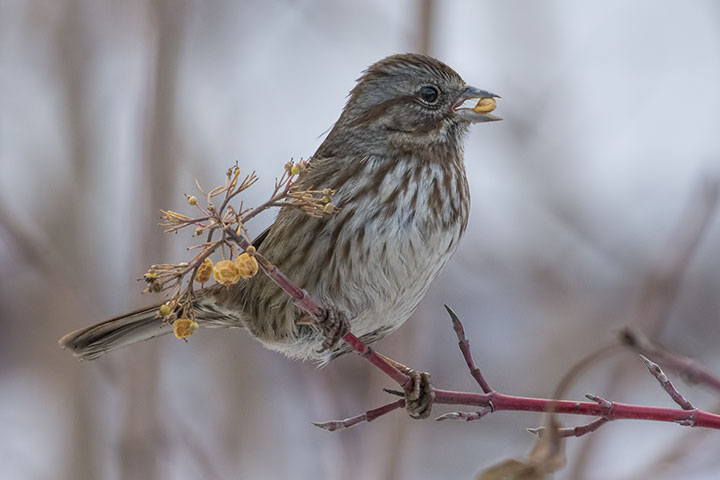
Similarly, the dipper is with us year round. It is easy to see diving for food in creeks, but I have never managed a shot such as this before. It was caught just as it surfaced, still covered with a film of water, which an instant later drained away. It looks rather like robodipper keeping the creeks safe for all.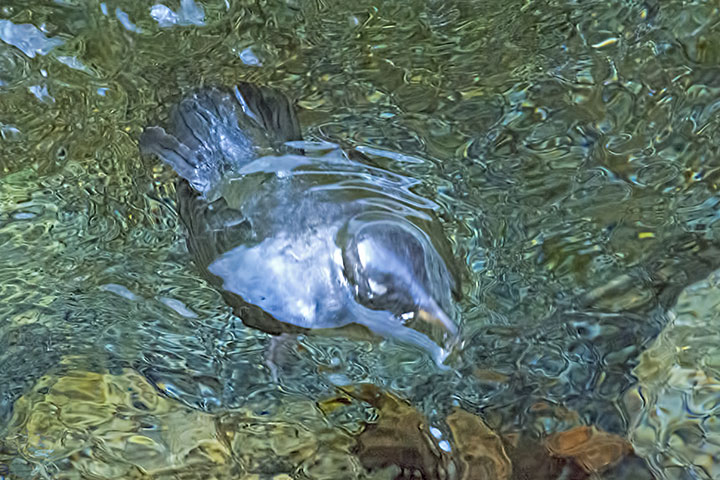
In Canada, the Chestnut-backed Chickadee is seen only occasionally and then only along the West Coast and in the Kootenays. As such, it is distinctly less common than its cousin, the Black-capped Chickadee, which is a common bird across the country. This was one of four flitting about in Douglas-firs. 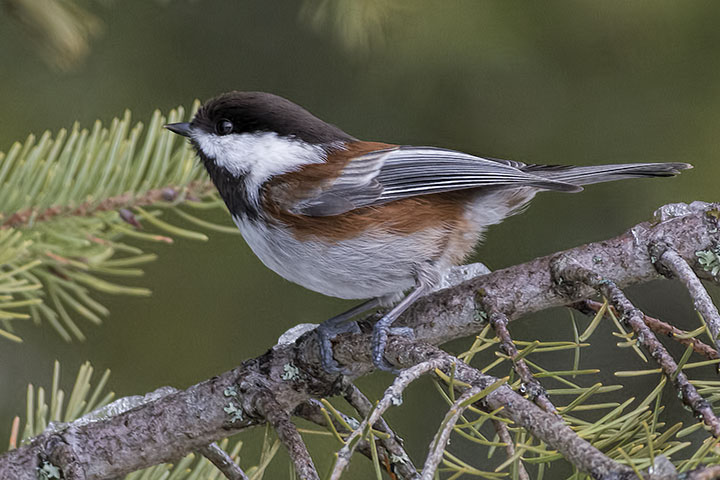
The Bohemian Waxwing is only seen around here during the colder half of the year. But, as the birds roam in large flocks, spotting them is either feast or famine. Here, over forty of them are in the tree. Why they are all looking in the same direction is unclear. Soon they were off again.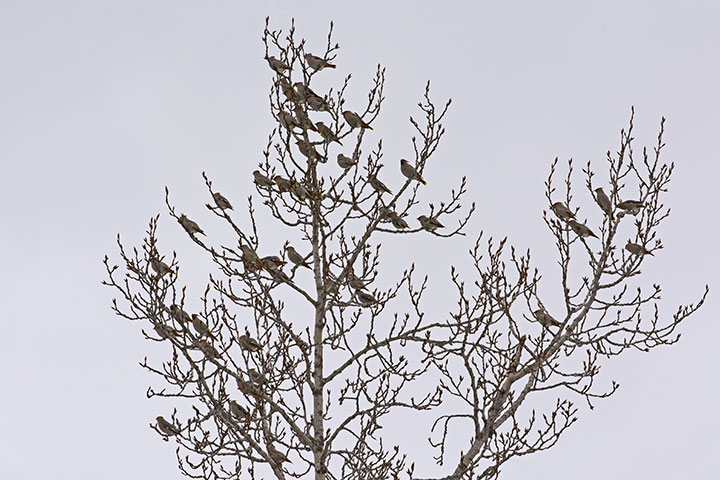
Waxwings are named for small red waxy extensions on some wing feathers, easily seen here as this bird preens.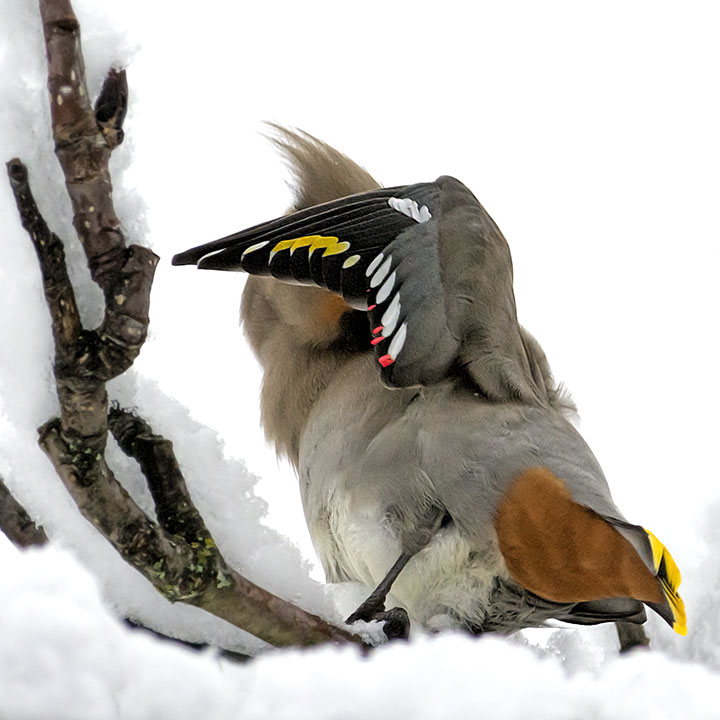

‘Why they are all looking in the same direction is unclear.’
If I was a bird I would look into the direction from which the wind blows, in order to keep my feathers clear (maybe this is an anthropocentric idea…). At any rate, this explanation implies that the birds indicate the wind direction (with an estimated error of +/- 45 degrees).
Michael, I am sure you are right. It is the most streamlined orientation (least drag) to adopt when perched. Also, a bird about to take off will do so into the wind.